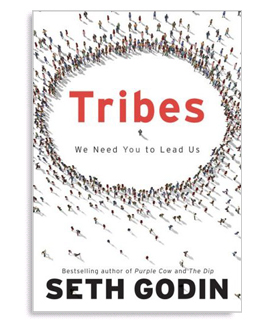Take a look at the AARRR model from Dave McClure and tell me what you think is the hardest step?

I asked this same question to a class of MBA students here at the Shidler College of Business and the answer of choice was the last step: Revenue.
Yes, conversion is very, very hard to do. However, I think that what my MBA colleagues missed is that you cannot get to the Revenue step without Retention and Referral. Even though viral marketing only appears under the Referral step, I have found from my personal experience that viral marketing involves both Referral and Retention.
The current state-of-the-art of Acquisition is so advanced that acquiring users (more than 30 seconds on your site and at leat 2-3 pageviews) is relatively easy.

There are plenty of techniques (refer to the orange square above) that are pretty effective of practicing interruption marketing (as Seth Godin calls it and he provides quite a sad example of it). A highly effective of acquiring customers is through Facebook Advertising, if you want to find out more about it read this post on how to target your audience using Facebook Advertising.
Currently web marketers are masters of the Acquisition step and MBA students (future web marketers) are focusing on finding out how to excel at the Revenue step. The best example of this sad business model is the thought that Twitter is a Cash Cow in the Making (derive a funny @name, horde tons of followers, and reap the CPC rewards). In a nutshell, the thought is that Retention and Referral are going to happen automatically somehow in any startup model. During the dot-com era, and some still today, Internet startups fail to understand that the most common source of failure for startups is a lack of customers and not a lack of product development. Often startups are good at managing its product development, but terrible at managing its customer development.
The gold (a.k.a traction or conversion) is to develop effective, scalable, contagious, ADDICTIVE Retention and Referral steps.
Viral marketing is essential for the success of any business enterprise. Word-of-mouth beats any marketing concoction any given day.
Really good examples of viral marketing are:
1. Photojojo’s Scavenger Hunt: This little forum post has created 504 responses from Photojojo’s readers. It is a very, very simple idea, yet very, very, very A-D-D-I-C-T-I-V-E.

2. Sprout widgets: I am big fan of Sprout because it allows you to tell a story and then that story can be shared with others. Here is my stab at creating a Sprout widget for iLovePhotos. This little widget can be found in various places of Facebook and I have found that people see it as a little pin of support for a little startup from Hawaii. You can found our widget at Bacon Lettuce Photo – The iLovePhotos Blog.
3. Blogs that instead of being e-mail are ME-mail: the perfect example is Flickr. This should not be a surprise but it is still a very hard idea to push. Instead of telling people how great your company and product are, you should be telling your users how awesome they are. Build a tribe (another Seth Godin term) that is about making feel your users good.

Retention and Referral are hard to achieve and there is no magical sure-shot way to do it. I hope that this post gets you thinking about their importance.
